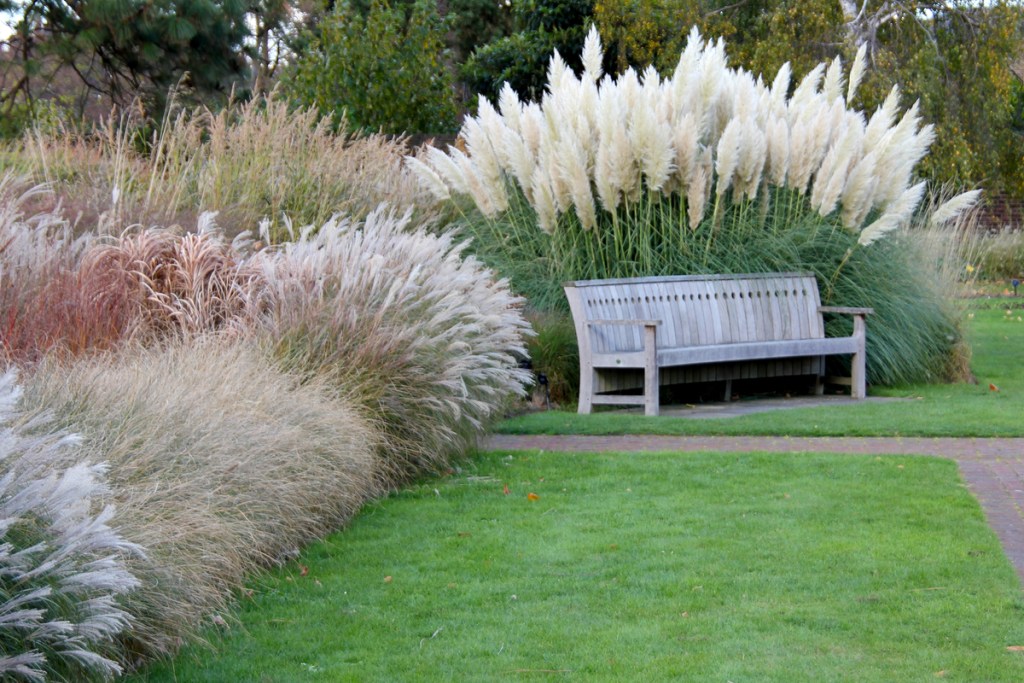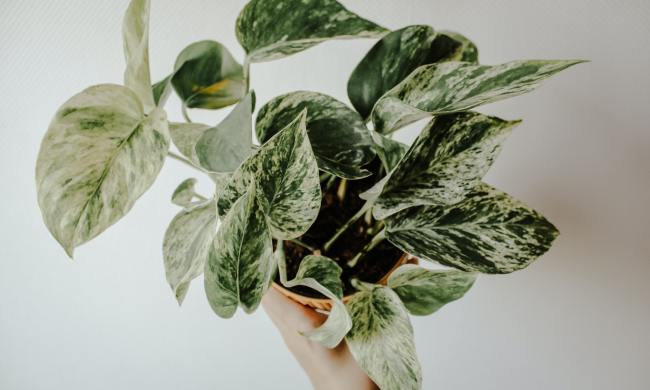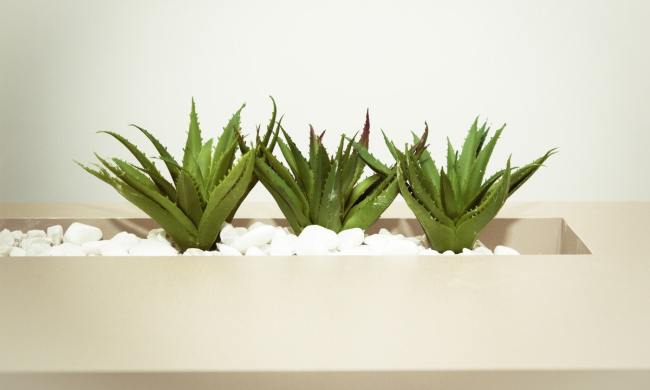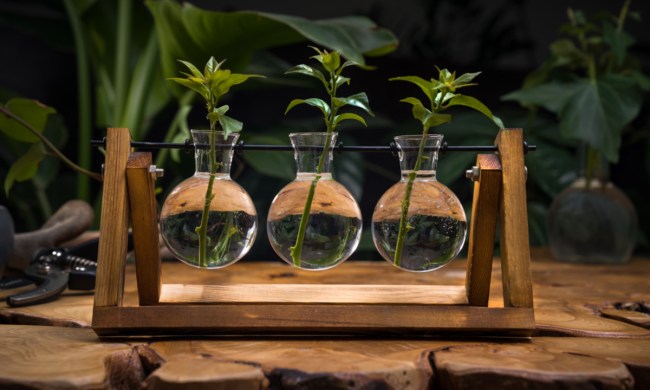Some landscape areas present challenges that are not easily overcome. If the soil is bad, it can be improved, but water scarcity is a different kind of problem. Sunny slopes and other difficult-to-water areas call for plants that can handle these dry areas. The good news is that there are lots of gorgeous plants that thrive in dry soil.
Great solutions can come from locally native plant species. Other popular plants for dry gardens come from semi-arid regions all over the world. These are some of the easiest plants to grow because once established they require little maintenance. They may require supplemental watering for the first season, as they establish deep root systems, but then they can survive all but the most extreme dry weather without irrigation.
Ornamental grasses
Ornamental grasses have a clumping growth habit rather than forming turf. The various species grow upright, arching, or weeping foliage that provides soft structure in the landscape. The gentlest breezes add elements of motion and white noise as the grass blades sway. In mid to late summer, grasses send up their flower stalks, followed by occasionally colorful fall foliage for a nice change in appearance. In winter, many gardeners leave the brown grass clumps standing until just before new growth begins to emerge, and then prune them back just before the onset of spring.
Penstemon
Also known as Beardtongue, Penstemon is the largest genus of flowering plants native to North America. That means there’s plenty of material for plant breeders and growers to work with. Penstemon grows as a rosette of semi-evergreen foliage that produce spikes of snapdragon-like flowers during the growing season in late spring and early summer, mostly in shades of blue, purple, white, and pink. The foliage may be deep green, silvery, or maroon, depending on the cultivar. They are commonly used as ground covers or slope protection plants and blend well into perennial border gardens.
Sedum
Sedum, also known as stonecrop, is an extensive group of succulent plants that includes both trailing ground cover types and clump forming, upright growers. They are ideal candidates for container plantings, perennial borders, mixed slope plantings, and rock gardens. They make efficient use of limited moisture by storing water in their fleshy tissue and using it slowly over time. Sedums are considered semi-evergreen as foliage rosettes remain at the stem bases through winter. Bloom time is summer to fall, depending on the species.

Coneflower
The Echinacea family, known as coneflowers, produce loads of large pink, purple, yellow, or white blooms in the heat of summer, and they don’t mind if the soil is dry. These hardy perennial species are native to a variety of American habitats, including prairies, meadows, and other open spaces. Their early to mid summer flowers, as well as seeds, and foliage support a great diversity of birds, insects, and small mammals, making them popular for pollinator gardening and wildlife habitat plantings. Many herbalists recommend their use, especially the species Echinacea purpurea, for a host of health benefits.
Russian sage
Salvia yangii, formerly Perovskia atriplicifolia and better known as Russian Sage, produces attractive gray-green foliage and lavender-blue flower spikes in late summer and fall. Deep roots allow this perennial or sub-shrub to scavenge water far down in soil that is out of reach to other species. This plant makes an excellent companion for many other drought-tolerant plants in dry gardens. Plant it in drifts across a sloped area, or use it as an accent plant in perennial borders or rock gardens.
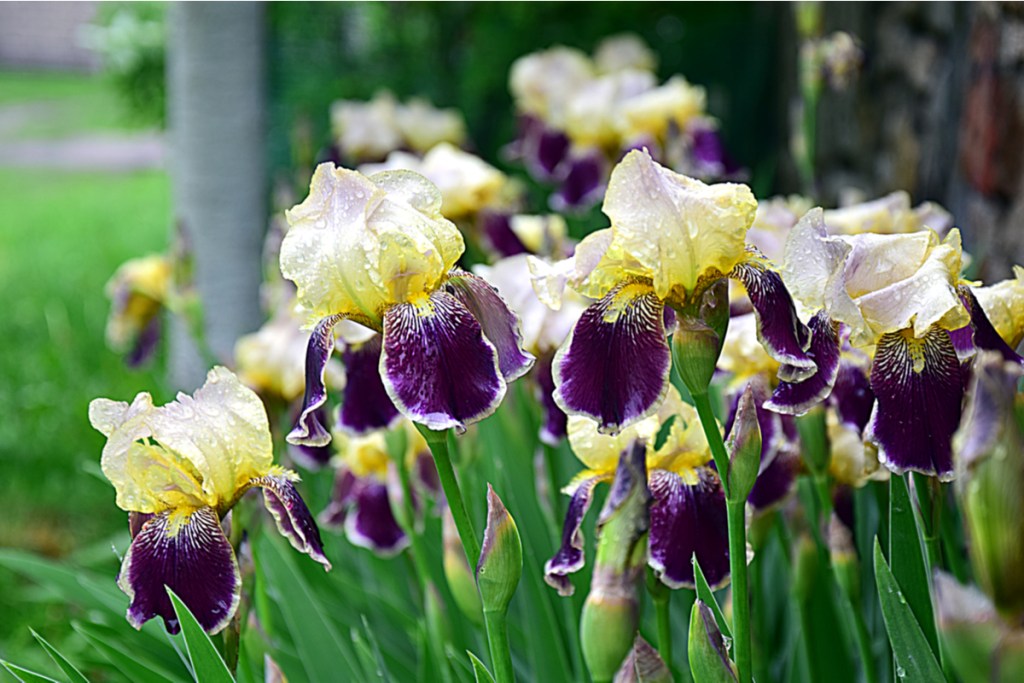
Bearded iris
Bearded iris, Iris germanica, offers drought tolerance and oversized spring color. Similar to succulents with their foliage, iris use their fleshy rhizomes to store excess water until they need it during dry weather. These ever popular plants have been the subject of plant breeders for centuries. They offer a huge diversity of bloom forms and colors including red, white, purple, yellow, peach, orange, rose, and black. Many bicolor cultivars are available, as well. The broad, strap-like foliage is semi-evergreen.
Even the most drought-tolerant plants need some water, especially newly installed plants. For best results in establishing a dry garden, plan to water as needed during the first growing season. Also, apply a two or three inch layer of mulch to protect roots from temperature extremes and reduce evaporation. After establishing their extensive root systems, and with a well maintained layer of mulch, these plants will be equipped to thrive in all but the most extreme dry spells.
Drought-prone landscapes don’t have to be covered in dead grass and weeds. If you choose drought-tolerant plants for dry areas and commit to one season of occasional deep watering to help them grow deep root systems, you can enjoy a beautiful garden for many years to come.
